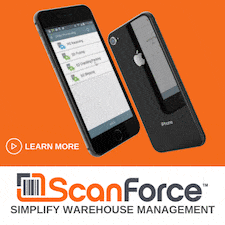As long as there have been business transactions, there have been dozens, if not hundreds of ways developed to evaluate, manage and make a profit from the process. It can be argued that human capital is as important as the financial capital is to an organization’s livelihood. Thus making an organization’s human capital, its employees, and their performance, critical.
A Business Intelligence Tool
Regardless of the industry, employee skills and their performance impacts the bottom line of the organization. It is the job of human resources to provide the tools to better manage and understand those factors that affect and contribute to employee performance. That is where using analytics to management employee performance can make a difference. HR analytics is data-driven and a proven approach to identifying and analyzing people/employee related issues. Analytics can uncover new and useful insights that can lead to innovative solutions based on the objective data sets. Essentially, using HR analytics identifies people problems and opportunities. Problems that may impact business can be identified early in the process or even possibly eliminated altogether with the proper application of analytics. Opportunities become visible and can offer actionable insights that ultimately set up prescriptive and predictive analytic scenarios.
Employee Performance Management Is Evolving
Conventional performance reviews have been typically paper-laden and one-directional, with little opportunity for an open discussion and reflection on company, employee, or team goals, and how they relate to overall company performance, outcomes, and achievements. Depending on the method or technology being used for employee performance management, getting a real-time look at what the data means may have its own roadblocks. Technology solutions in recent years have improved this process, as has the changing nature of performance reviews. Performance reviews and appraisals for many organizations have shifted from an annual event to a continuous performance process. One of the key findings in The State of Performance Management 2021 report, conducted by HR.com’s HR Research Institute, and sponsored by LightWork® Software, shows 65% of managers and employees have conversations about performance four more times a year. This increased frequency coupled with a system to capture this information can provide meaningful data for use in performance analytics. Knowing how to make the right queries. i.e. ask the right questions, of the data is key to extracting useful and actionable information.
Establishing and Aligning Goals Is Imperative
Now more than ever HR professionals have the opportunity to bring real analytical employee performance data into the decision making process. Building a practice of thinking strategically and making decisions based on analytics will enable HR to continue to improve its contributions and elevate its influence within the organization. Aligning organizational Key Performance Indicators (KPI) with individual and departmental goals that are Specific, Measurable, Achievable, Relevant and Time-sensitive (SMART) will enable the technology to monitor, measure, track and report progress. Defining what success looks like for the organization is critical to establishing relevant goals.
It is common to find strategies and employee performance tasks that do not align with the KPIs of the organization. A proactive HR leader would examine these elements of the strategy to ensure they are matched. The next step would be to work with managers to establish milestones and analytics to gauge progress and achievement.
HR professionals who embrace technology and are equipped with the skills to embark on analytical thinking coupled with digital literacy and data analysis are the leaders of today. Those who are open-minded and ready and eager to learn these skills can improve their ability to think strategically and lead moving forward.
In the HR.com 2021 report, 90 percent of respondents say their organizations hold managers accountable for performance management in some way. There are several ways of doing this. The most obvious one is to track if they are doing it at all, but nearly half of organizations (45%) fail to take this basic step according to the report. One of the most fundamental, but not insignificant, benefits of performance management technology is that it makes it easier to track who has submitted performance appraisals and to remind managers who are late with their submissions. Using a business intelligence tool like analytics streamlines the performance evaluation process.
It is common to find strategies and employee performance tasks that do not align with the KPIs of the organization. A proactive HR leader would examine these elements of the strategy to ensure they are matched. The next step would be to work with managers to establish milestones and analytics to gauge progress and achievement.
HR professionals who embrace technology and are equipped with the skills to embark on analytical thinking coupled with digital literacy and data analysis are the leaders of today. Those who are open-minded and ready and eager to learn these skills can improve their ability to think strategically and lead moving forward.
In the HR.com 2021 report, 90 percent of respondents say their organizations hold managers accountable for performance management in some way. There are several ways of doing this. The most obvious one is to track if they are doing it at all, but nearly half of organizations (45%) fail to take this basic step according to the report. One of the most fundamental, but not insignificant, benefits of performance management technology is that it makes it easier to track who has submitted performance appraisals and to remind managers who are late with their submissions. Using a business intelligence tool like analytics streamlines the performance evaluation process.
Analytics Is About Asking the Right Questions
- Would knowing who the lower performers are be useful to help develop training programs?
- Would knowing top performers help plan compensation considerations?
- Would knowing absenteeism rates offer insights into employee engagement?
- Would it be helpful to know about the lack of a specific skill set in the employee base? Or even a specific location?
- Would it be helpful to know the potential of an employee’s preponderance to leave the job based on certain factors, such as relationship with managers, compensation, and absence of a clear succession plan
- Would it be helpful to know how many managers are following the performance review plan?
Having the answers to these queries or any number of other questions specific to your organization can assist in making data-based intelligent decisions about employee development, engagement, recruitment, working environments, KPIs and more. All of which are significant to the productivity and productivity of the organization.
Features to Look for in Performance Analytics Systems
- Centralize data, and integration of databases from all HR modules such as time, payroll, performance and recruit for a comprehensive view of all data sources
- Ability to create custom queries
- Dashboard filters to parse data for a custom display
- Visual alerts based on system triggers to track progress
LightWork® Analytics is the business intelligence tool designed to let you ask questions about your data and display those answers in formats that make sense, whether that is a bar graph or a detailed table. You can save your questions for later, making it easy to revisit them, or you can group questions into great-looking dashboards. Then, you can easily share questions and dashboards with the rest of the team. LightWork Analytics is not a static display, but rather a dynamic tool, designed to display valuable data in a way that can be easily consumed to give strong direction for departments and the organization as a whole. LightWork Analytics is good for your organization’s bottom line.



